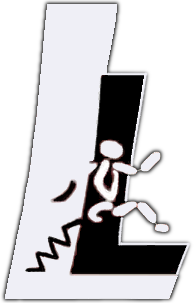| Both sides previous revision
Previous revision
|
Last revision
Both sides next revision
|
home [2014/05/18 15:36]
Filip Cengic [Locomotion Laboratory] |
home [2018/06/19 16:04]
Maziar Sharbafi [Pick of the month - Compliant ankle function results in landing-take off asymmetry in legged locomotion.] |
| ===== NEWS ===== | ===== NEWS ===== |
| |
| ==== Pick of the month - Compliant ankle function results in landing-take off asymmetry in legged locomotion. ==== | ==== Pick of the month - Workshop in BioRob 2018: Novel bioinspired actuator designs for robotics (BioAct). ==== |
| | |
| | {{ :robokids-bleu-1.jpg?400|}} |
| | |
| | Together with colleagues from Vrije Universiteit Brussel and Universität Stuttgart, we have organized a workshop in [[https://www.biorob2018.org/|BioRob 2018 Conference]] on August 26th. This workshop is arranged through goals of [[projects:projects_epa| EPA project]] and [[https://pearres.wordpress.com/|PEAR]]. |
| | |
| | **Abstract:** Through evolution, muscles have been optimized to generate and fine-tune motions. They provide highly versatile force sources, i.e., they have an extremely low impedance (perfectly back-drivable), provide functional damping and low stiction. Although their bandwidth is limited, it is sufficient for even highly dynamic human/animal locomotion. Some biological principles can be applied to robotics, e.g., the addition of compliance to traditional rigid actuators. Elastic actuators can increase safety in human-robot interaction, improve energy efficiency, reduce impacts and augment performance in dynamic tasks. While such actuators have been researched extensively over the past two decades, there are still various open questions. These relate to the fundamental properties mentioned above, but also to their implementation and control as well as the integration of their hard- and software. Elastic actuators have been applied in wearable robotic devices, rehabilitation robots and humanoid robots. In the last years, bio-inspired approaches have brought the capabilities of elastic actuators closer to those of the human muscle, e.g., by introducing redundancy to mimic the muscle fibre recruitment. Another level of redundancy can be achieved by employing mono- and bi-articular actuators to achieve designs with increased robustness and simplified control. We plan to divide the workshop in four sessions comprising three talks of around 20 minutes. At the end of each second session, there will be an extensive discussion (around 45 minutes) between participants and speakers of the two sessions. There will be live demonstrations during the talks and in the subsequent discussion. Besides the invited talks and discussion, the organizers will call for posters to be presented at the workshop. \\ |
| | |
| | \\ |
| | Click [[Home:BioAct|BioAct Workshop]] for more information. |
| | |
| \\ | \\ |
| [{{ :potm_fslip.png?400|Fig1: FSLIP. Stance phase (A) in FSLIP and (B) in human running. Black lines show the leg spring axis and the foot segment (FSLIP model) respectively the line from hip to heel and heel to metatarsal marker (human running), grey lines indicate the alignment of the GRF.}}] | |
| |
| The spring loaded inverted pendulum (SLIP) model is widely used to explain basic characteristics of human walking and running. Its periodic running solutions can be mirrored at the instant of the vertical orientation of the leg and thus are symmetric between landing and take-off. In contrast, human running shows asymmetries between touchdown and take-off (e.g. shorter brake than push duration, greater mean ground reaction force during braking phase). Yet it is not fully understood whether these asymmetries are caused by asymmetric muscle properties (e.g. velocity-dependent force generation) or the asymmetric lever arm system in the human leg. We extend the SLIP model by a foot segment and a compliant ankle joint (called FSLIP). This represents the extended foot contact and the displacement of the center of pressure during contact. | |
| |
| The FSLIP model shows the same asymmetries as found in human running without considering asymmetric muscle properties. Together with the reversed asymmetry observed in human backward running, this indicates that the asymmetric lever arms created by the foot can cause the observed landing-take-off asymmetry in human running. | |
| \\ \\ | |
| [[publications:publications_podcasts_pick_of_the_month|Read previous news...]] | [[publications:publications_podcasts_pick_of_the_month|Read previous news...]] |
| | |
| | |




